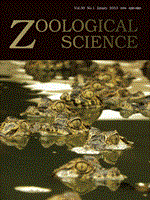We investigated population structure of the salamander Hynobius retardatus in Hokkaido, Japan using partial sequences of the mitochondrial DNA control region (490 bp) from 105 individuals. The salamanders were collected from 28 localities representing the entire regional distribution of this species. Twenty different haplotypes distributed across three haplotype groups were identified. Group 1 was widely distributed in central, northern, and eastern Hokkaido, except Erimo; Groups 2 and 3 appeared exclusively in Erimo and southern Hokkaido, respectively. The genetic distance between the three groups was not very large, but the distributions of the groups never overlapped spatially, indicating a hierarchical population structure comprising three regional groups, which was also supported by analysis of molecular variance. The results suggest that the present population structure is affected by current genetic barriers, as well as by historical transitions of climate and landscape.
How to translate text using browser tools
1 January 2013
Population Structure of the Salamander Hynobius retardatus Inferred from a Partial Sequence of the Mitochondrial DNA Control Region
Noriko Azuma,
Jun-ichi Hangui,
Masami Wakahara,
Hirofumi Michimae
ACCESS THE FULL ARTICLE

Zoological Science
Vol. 30 • No. 1
January 2013
Vol. 30 • No. 1
January 2013
Hynobius retardatus
mitochondrial DNA
PHYLOGEOGRAPHY
Salamander
Urodela




